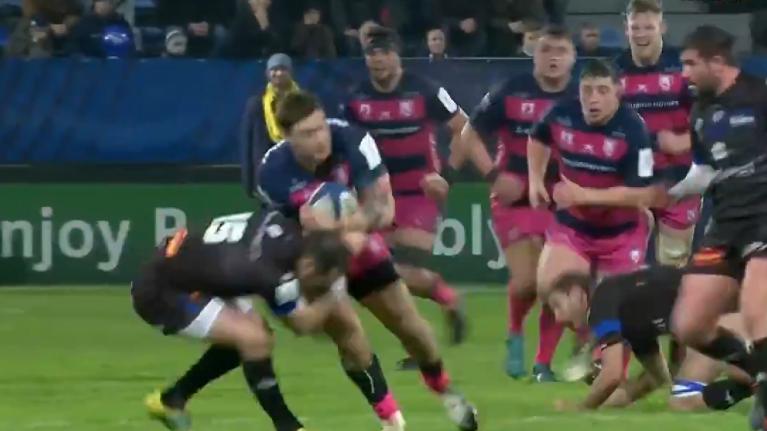Watch: Battering Banahan goes beast mode to set up spectacular try

Gloucester wing Matt Banahan proved just why he is one of rugby's toughest men to cover in his side's 24-22 Champions Cup loss to Castres on Saturday.
Listed at 6'7" and 110kg, the 32-year-old made his presence felt in setting up a spectacular counter-attacking try and helping Gloucester build on an early lead.
Fielding a kick from Castres wing Armand Batlle, Banahan collected the ball at full speed and set off down-field from inside his own half.
Using his size and pace, Banahan went straight over the top of Castres fullback Scott Spedding and drew the attention of two more defenders before slipping away a difficult grubber kick.
Gloucester halfback Ben Vellacott won the race to the ball and slid over the line for Gloucester's second try, capping an incredible counter attacking effort.
Banahan has long been one of the Premiership's most prolific scorers, but Saturday proved he can set them up just as well as anyone.
Unfortunately for Banahan's Gloucester, the end result didn't go their way, with Castres number eight Maama Vaipulu crashing over after the final whistle to steal victory.
With the match decided and both sides eliminated from playoff contention, Vaipulu's back row mate 35-year-old Yannick Caballero had a crack at the conversion to end his team's campaign on a high.
Castres finished with a record of 3-3 in the pool to Gloucester's 2-4 with the 24-22 victory. Munster topped the pool and advance to the quarterfinals with a record of four wins, one loss and a draw.
Rugby World Cup City Guides - Fukuoka:
Latest Comments
Yes a double edged sword, as that is also what makes them so dangerous to the most organized defences.
If they can find the right balance and execute to where theyre not just turning and offloading the ball straight into the oppositions arms, and dealing better with the disadvantage the scrum is, they could push for playing for a spot in the final this year. It really exciting that the Landers may even push past that in the years to come too.
Go to commentsI love this guy, so pleased he’s staying with the Canes
Go to comments